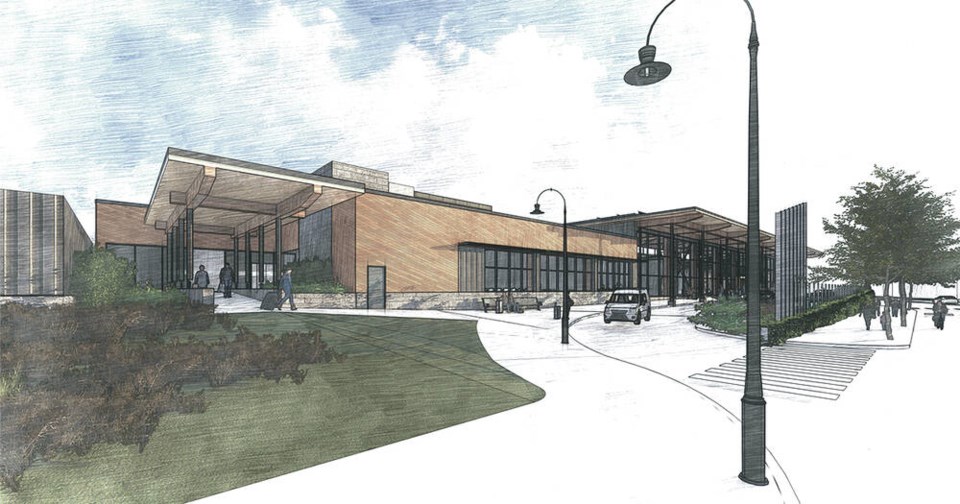After decades of talk, studies, reports and wishful thinking, work on a new Belleville Street ferry terminal could be just around the corner.
On Tuesday, the province unveiled a one-month public input process as the government formulates a business case for redevelopment of the site.
The province said the Belleville Street facility, which houses tourism and commercial links with the U.S. through Blackball’s Coho car ferry and Clipper’s passenger ferry in two locations, no longer complies with the Canada-U.S. Land, Rail, Marine, and Air Transport Pre-clearance Agreement.
That’s because it doesn’t have space for isolation rooms for questioning and searching of passengers heading to the U.S.
If that is not rectified, U.S. Customs and Border Protection could leave the Island, leading to possible shutdown or reductions in existing services like the Clipper and Coho, which could mean big tourism losses.
“I think it’s vital that [the new terminal] happens, given that Canada is in violation of the treaty,” said Paul Nursey, chief executive of Destination Greater Victoria. “The risk is we lose U.S. Customs and Border Protection, processing capacity, not only in the harbour but in supporting Washington State Ferries [in Sidney] when that service restarts.”
In 2019, the last full year before the pandemic, the facility processed just over 680,000 travellers who generated an estimated $174 million in direct spending in the province.
Nursey said the link to the U.S. is “absolutely central” to the tourism industry, characterizing the terminal as “vital, critical infrastructure.”
Ryan Burles, president of Blackball, said the pre-clearance agreement with the U.S. means a new facility is a must, but it can’t come at any cost.
“Our intent is to have a facility together with Clipper that would be for the next generations,” said Burles. He said Blackball still has questions about how much of the cost the company will bear and the impact on its operations. “We need to make sure that this is viable for our business.”
The proposed terminal project, estimated to cost between $220 million and $290 million, would bring the Clipper and Coho operations into the same terminal building. Currently the two companies operate from separate docks.
The new facility would also accommodate both the Canada Border Services Agency and U.S. Customs, allow for processing of commercial goods and still move people in a fairly seamless fashion for both Coho and Clipper.
“And maybe the public will have some good ideas that will make the project even better,” said Burles.
Establishing a customs pre-clearance facility would allow passengers to clear U.S. customs in Victoria and avoid long lines at their destination. While that has been the norm at airports for decades, it has not been extended to land and sea crossings.
Matthias Pahnke, chief executive of FRS Clipper, said his company supports the progress so far on the redevelopment, but like Burles, he noted there are still questions about the financial model.
While the company is in discussions with the province and cannot discuss details yet, he called the terminal redevelopment a “great opportunity to provide passengers with a decent entry into Victoria.”
“The current situation works but is not a great passenger experience.”
He said adding pre-clearance in Victoria would be a great advantage for passengers.
While the province awaits public input, it has already laid out what the project will look like.
The facility will be no more than three storeys in height, though the second storey would be at street level. There could be commercial opportunities along Belleville Street, space for passenger pick-up and drop-off and integrated pedestrian and active-transportation facilities.
The province has said it would put the project out to tender next spring, in hopes construction would be complete by the end of 2027.
The first phase of construction would include building a temporary terminal inside the CPR Steamship Terminal Building to house Clipper and U.S. Customs and Border Protection.
The Coho and the Canada Border Services Agency would continue to use the existing Coho terminal building during the construction.
The second phase would include demolishing the Clipper terminal, creating a new pre-clearance terminal building, replacing the wharf, and construction of a commercial-goods-processing facility and terminal building using mass-timber components.
The province is hoping Ottawa will come to the table with half the construction cost.
Bruce Williams, chief executive of the Greater Victoria Chamber of Commerce, said the political will is there at all levels of government to replace the facility, but he’s not ready to start planning ribbon-cutting ceremonies just yet.
“But I’m hopeful that this engagement process will give the project the momentum it needs to become a reality,” he said. “The chamber has been calling for senior government to invest in Belleville Terminal for more than a decade. The need for investment in Belleville is clear, but there have been a lot of changes in governments and all have faced shifting priorities. That said, we keep advocating for needed improvements and this is a good step forward.”
The public engagement will run until Oct. 20, and includes an open house on Sept. 27 from 2-8 p.m. at the Victoria Conference Centre and an online survey at https://engage.gov.bc.ca/bellevilleterminal
>>> To comment on this article, write a letter to the editor: [email protected]



